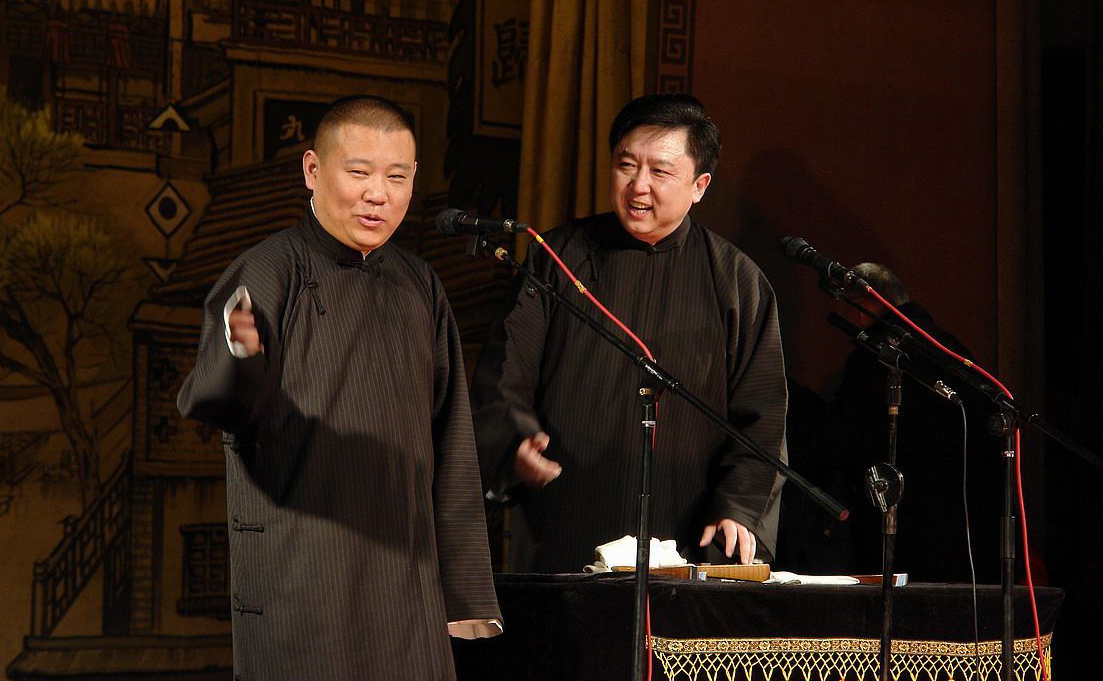Mass culture ushers in new comedy era

Popular Chinese cross-talk actors Guo Degang (left) and Yu Qian (right)
Comedy is a broad genre and as its literal meaning expands, its connotations are being enriched.
In modern times, its status began to change from specific artistic forms and images to an aesthetic category.
Comedy, as an aesthetic category, covers many fields and domains in literature and art, as well as real-life phenomena that contain comedic elements. Jokes, cross-talk, comedic skits, talk shows and comic strips can all be included in the category of comedy.
In the 20th century, television and film became the primary venues for comedy. In the new century, humorous online games and videos further broadened the concepts of what is considered comedic.
All these artistic fields and forms of recreation are the current focus of research into comedic aesthetics.
Pursuing excellence
In a superficial sense, comedies are funny and amusing, but underneath they touch upon the most serious topics in real life that are closest to people’s common experiences. French philosopher Henri Bergson (1859-1941) once remarked, “The more excellent the comedy is, the closer it is to real life. Some scenarios in life are so applicable to high-grade comedies that they could be put on stage without any artistic adaptation.”
The core of comedy aesthetics is revealing the essence through phenomena, and exhibiting the ridiculousness of abnormality and disharmony, to make people reflect on human society and themselves. In this way, it is possible to relieve the tensions between people and external objects, the ideal and reality, the self and the other, and people and society; and then realize the ultimate goal of excellence.
Comedy inspires people’s self-consciousness through seemingly hilarious forms of expression. The spirit of comedy is to bring about progress and freedom through introspection. Unlike tragedy, which provokes people’s sympathy to serve as a bridge for communication, comedy produces absurdity to expose and examine certain circumstances.
Infiltration into life
Comedy is more than entertainment. It is capable of probing into people’s shared experiences and striking a chord. In modern times, people apparently prefer comedy to tragedy because the former transmits more positive energy.
Comedy can find expressions in two extremes on the continuum of people’s experiences: laughter indistinguishable from animal behavior and bitterness to the extent of bursting into laughter.
There are strong elements in traditional Chinese culture for moral instruction and constraints by observing etiquette. There are suggestions for “restraint even in privacy” and admonitions for “sapping one’s spirit by seeking pleasure.” Hence, there is reverence for “misery” and “heaviness” while caution toward “joy” and “relaxation.”
With the emergence of post-modern consumer society, there has been rapid spread of a mass culture that takes “happiness” as its kernel. It makes people recall their primary emotions and realize the depth and relevance of comedy. People’s right to enjoyment is justified.
Many comedic products are produced and cultural images created, but at the same time, people’s attitudes toward life and tastes are also changed. The arrival of a mass culture which pursues happiness and exuberance is inevitable.
The spirit of tragedy is out of accord with the times and is unavoidably abating, while the awakening of a comedy spirit is being ushered in. Humor and exuberance embodied in various art forms will make their contributions to lessening people’s mental stress.
Fu Shouxiang is from East China University of Political Science and Law.
